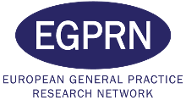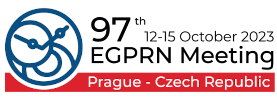Fostering HPV Vaccination Uptake in Youth: Insights from the Young Generation
Hüsna Sarıca Çevik, Gülsen Ceyhun Peker, Shlomo Vinker, Süleyman Görpelioğlu, Mehmet Ungan
Keywords: Communication, family physicians, HPV, vaccination, young people
Background:
As part of the PROTECT-EUROPE project, funded by the EU4Health Programme and aimed at promoting gender-neutral vaccination to protect youth against HPV-related cancers, WONCA Europe conducted a consultation with youth organizations(Youth Cancer Europe, ThinkYoung, and Youth Health Organization) to determine the key ideas to convey and identify ways to improve one-on-one communication between clinicians and youth.
Research questions:
Which strategies can be implemented to enhance communication between family physicians/general practitioners(FPs/GPs) and youth, specifically focusing on gender-neutral HPV vaccination?
Method:
The research team solicited written responses from the three organizations to address the goals. Subsequently, a SWOT analysis was conducted to assess communication between FPs/GPs and youth, and a video consultation was scheduled with representatives from organizations to facilitate further discussion.
Results:
The findings indicate that young people consistently recommended several key strategies, including emphasizing the transmission route of HPV, raising awareness about lifelong risk of encountering HPV and promoting gender-neutral vaccination by FPs/GPs. Participants suggested that vaccination rates could be increased by establishing alternative channels(virtual platforms, schools) for engaging with FPs/GPs; and emphasized the importance of making the vaccine free of charge and ensuring vaccination takes place in safe and easily accessible locations.
Regarding communication, strengths included building a trusting relationship before discussing HPV-related information, clear communication of vaccine facts, empathy, and doctors' effective communication skills. Weaknesses included using technical language by FPs/GPs, difficulties obtaining appointments and time constraints. Opportunities for improvement encompassed integrating sexual health and vaccination topics into annual visits and online platforms, and allocating more time for preventive actions/information during appointments. Threats encompassed the sensitivity of discussing HPV and the need for patients and doctors to initiate the conversation.
Conclusions:
Enhancing communication between FPs/GPs and youth, and actively involving youth in decision-making are crucial steps towards increasing HPV vaccination. Physicians and policymakers should prioritize these efforts to achieve the goals of PROTECT-EUROPE.
Points for discussion:
Are key recommendations from young people applicable? Participants can also explore practical suggestions such as making the vaccine free of charge and ensuring convenient and safe vaccination locations, such as schools and gyms.
What are the communication barriers with youth and what strategies do you suggest to enhance communication?
What are the opportunities with youth? Participants can explore opportunities for improvement, such as integrating sexual health and vaccination topics into annual visits, allocating more time for preventive actions/information during appointments, and leveraging online platforms for accessibility.
#113

